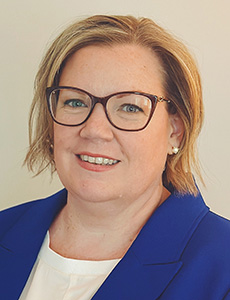Predict & Prevent® Podcast Episode 13: HSB’s Journey from Boiler Inspections to IoT Solutions

With a rich history spanning nearly 160 years, how Hartford Steam Boiler Inspection & Insurance Co. has evolved from a think tank focused on preventing steam boiler explosions to a leader in engineering, technology, and insurance solutions is the focus of “HSB’s Journey from Boiler Inspections to IoT Solutions,” the latest episode of the Predict & Prevent® podcast from The Institutes.
Host Pete Miller, CEO of The Institutes, sits down with John Riggs, Chief Technology Officer and Head of Applied Technology Solutions for HSB, to learn how the company is deploying advanced technology to deliver what it calls a “connect and protect” risk management strategy.
“I feel that prevention is great, but accidents will still happen. And in the case of them happening, there’s a higher level of value and that’s protection,” Riggs explained. “So that even if something does happen that I wasn’t able to prevent, I want to extend beyond prevent and say, I’m going to extend beyond predict with connect, and I’m going to extend beyond prevent with protect.”
Riggs shares insights into HSB’s approach to technology-enabled risk prevention and protection, highlighting the company’s focus on sensor solutions, risk solutions, and data solutions.
“As an insurance company, almost 50% of our employees are engineers. No other insurance company in the world can say that, but it is what drives our uniqueness and our compelling value prop in the business,” Riggs said. “There’s a lot of other great insurance companies out there that are very good at insuring against risk. We influence the risk. And that’s the difference.”
The conversation explores HSB’s collaborative ecosystem, upcoming product innovations, and the impact of technology on loss prevention. HSB is partnering with tech giants like Amazon to develop advanced sensor technologies, including an exciting new credit card-sized sensor that could transform property protection.
“So, imagine the size of a hockey puck and your inability to slide that under a refrigerator or slide it under a washer and dryer or slide it in a crevice along some other type of maybe commercial asset,” Riggs said, describing the size of most water and temperature sensors. “We said, hmm, I wonder if we could fit all of our sensor technology into something the size of a credit card? Well, we came close: It’s four credit cards stacked together. It’s four millimeters thick.”
That more versatile IoT product, which leverages Amazon’s Sidewalk wireless network, is in prototype and should be available next year, Riggs said.
To listen to this and other episodes, visit predictandprevent.org, or look for Predict & Prevent on most podcasting platforms. &











